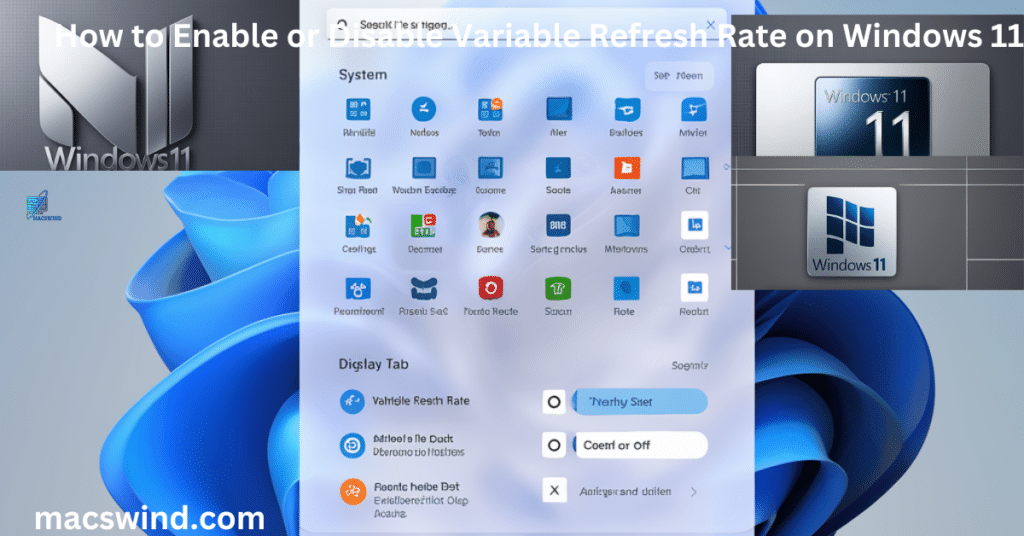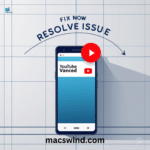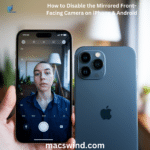In today’s digital landscape, many users are looking for ways to enhance their gaming and video-watching experiences. One effective way to achieve this is by learning how to enable or disable Variable Refresh Rate on Windows 11. Understanding how to enable or disable Variable Refresh Rate on Windows 11 allows users to optimize their display settings for smoother gameplay and video playback. With the option to enable or disable Variable Refresh Rate on Windows 11, you can easily tailor your system’s performance to suit your needs.”
What is Variable Refresh Rate (VRR)?
Variable Refresh Rate (VRR) is a feature that dynamically adjusts your monitor’s refresh rate to match the frame rate of your content, such as video games or movies. This synchronization helps reduce common display issues like screen tearing and stuttering, delivering a smoother experience. Instead of running at a fixed refresh rate (e.g., 60Hz or 144Hz), VRR allows your monitor to shift between rates based on the frames produced by your graphics card.
Some benefits of VRR include:
- Smoother gaming experience: When your display matches your GPU’s frame output, gaming becomes much more fluid, especially in fast-paced action or first-person shooter games.
- Reduced screen tearing: Tearing occurs when the monitor and GPU are out of sync. VRR eliminates this by ensuring the frames are perfectly synchronized.
- Improved video playback: When watching high-frame-rate videos, VRR makes the motion appear smoother and more natural.
This feature is primarily beneficial for gamers and those who consume media with fluctuating frame rates.
System Requirements for VRR on Windows 11
To take full advantage of Variable Refresh Rate on Windows 11, certain hardware and software requirements must be met.
1. VRR-Compatible Graphics Cards
For VRR to function, your system needs a VRR-compatible graphics card. These include:
- NVIDIA G-Sync: This proprietary technology from NVIDIA ensures VRR is fully compatible with your system if you’re using an NVIDIA graphics card.
- AMD FreeSync: AMD’s version of adaptive sync, which works similarly to NVIDIA’s G-Sync. FreeSync allows smoother, tear-free gaming on supported monitors.
Your monitor must also support these technologies to function properly with VRR.
Read more about How to Enable 2FA on Fortnite for Xbox, Nintendo Switch, PlayStation
2. Monitor Compatibility
Not every monitor supports Variable Refresh Rate. Most modern gaming monitors are equipped with either G-Sync or FreeSync, but it’s essential to check your monitor’s specifications to ensure compatibility. Look for the following features:
- Adaptive sync capability
- G-Sync or FreeSync support
- Refresh rate range (usually between 30Hz and 240Hz)
3. Operating System
While Windows 11 fully supports VRR, the feature is also available on Windows 10. However, to ensure the best experience and access to the latest features, using Microsoft’s Windows 11 is recommend
Read more about How to Post 20 Photos in One Post on Instagram at Once
How to Enable Variable Refresh Rate on Windows 11
Enabling Variable Refresh Rate on Windows 11 is a straightforward process. This feature can be turned on in the Windows 11 Settings menu, provided your system meets the hardware requirements.
Follow these steps to enable VRR on your Windows 11 device:
Step-by-Step Guide to Enable VRR
- Open Windows Settings: Press Windows + I to open the Settings panel.
- Navigate to System Settings: Once in the Settings panel, click on System.

- Click on Display: Under the System settings, select Display.
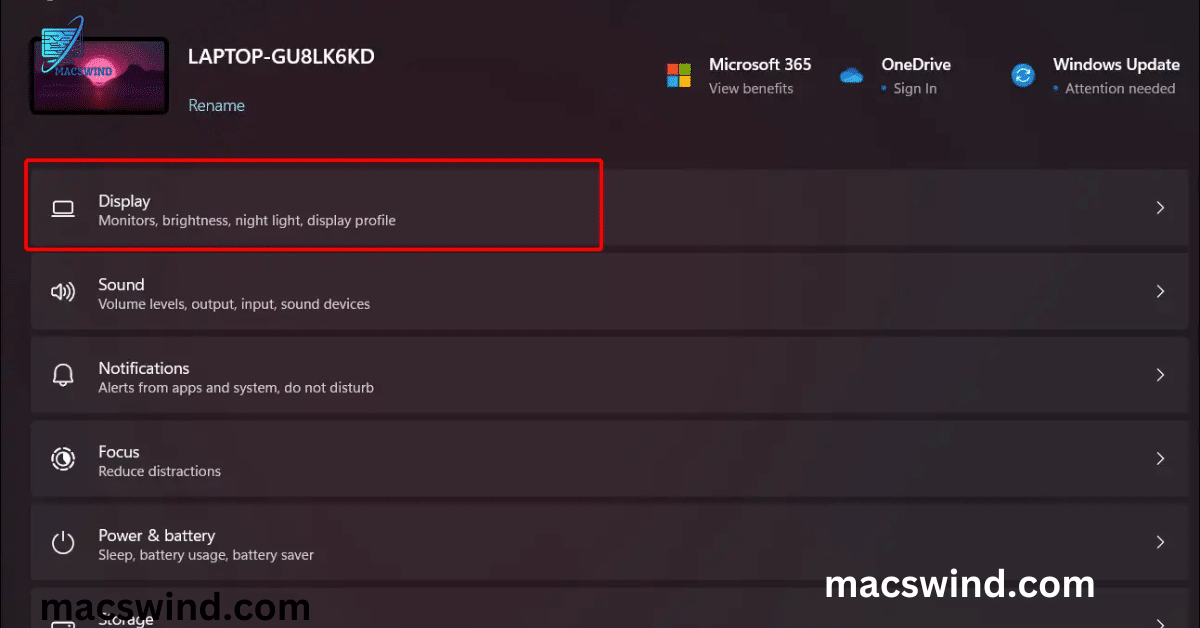
- Scroll to Graphics: Scroll down within the Display settings and click on Graphics to access your system’s display options.
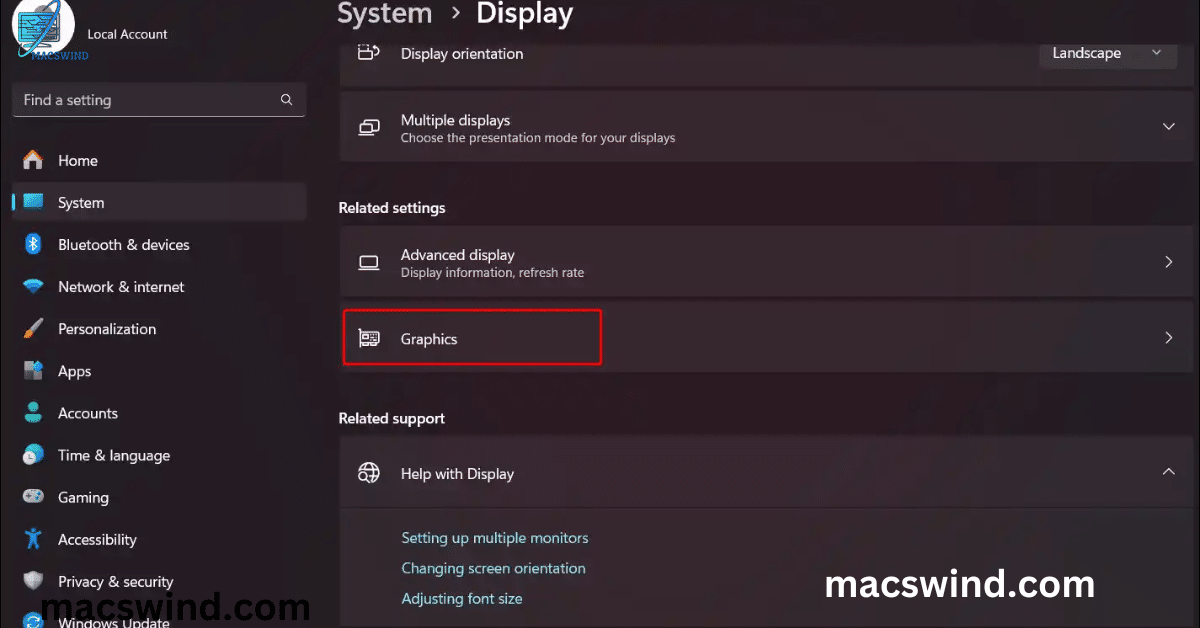
- Select Change Default Graphics Settings: In the Graphics menu, you’ll see the option to Change Default Graphics Settings. Click on this to access the VRR option.
- Enable Variable Refresh Rate: Under the Variable Refresh Rate section, toggle the switch to turn on VRR.
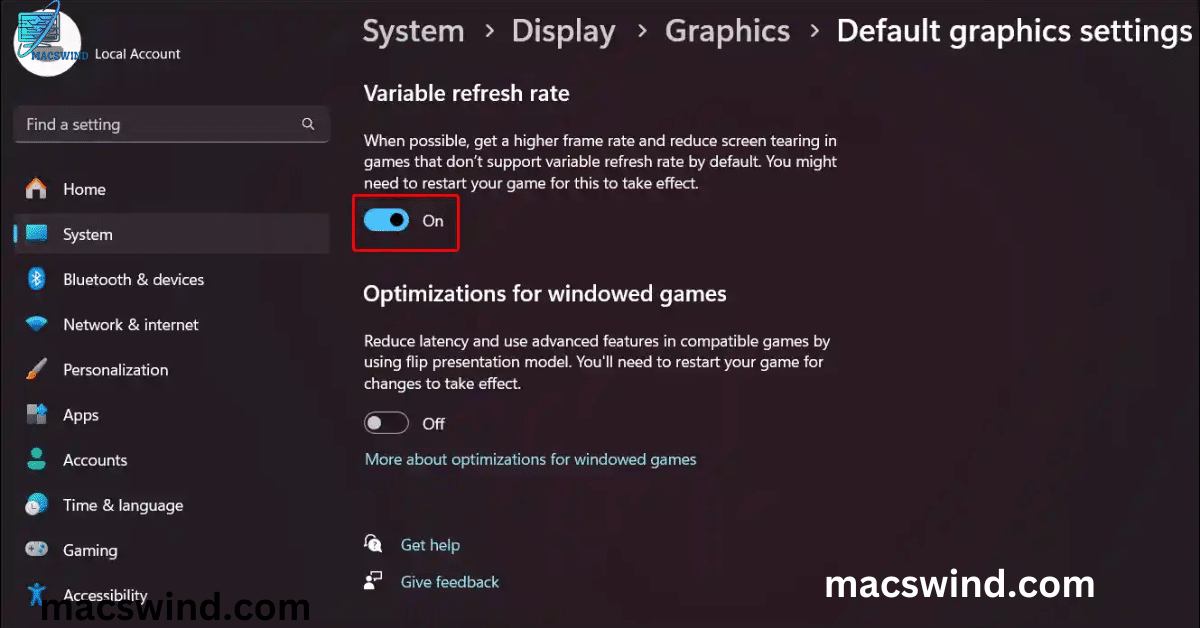
Once enabled, VRR will synchronize your monitor’s refresh rate with the GPU output, providing a smoother experience in games and videos.
Read more about 10 Quick Ways to Fix YouTube App Not Showing Thumbnails on Android & iPhone
Best Practices for Enabling VRR
- Full-screen vs. windowed mode: Some applications may perform better with VRR in full-screen mode rather than windowed mode. If you notice performance issues, try switching between the two.
- Graphics card drivers: Ensure that your GPU drivers (whether from NVIDIA or AMD) are up-to-date to avoid compatibility issues with VRR.
- Game-specific settings: Certain games offer VRR options within their own settings menus. It’s always a good idea to check each game’s specific recommendations.
How to Disable Variable Refresh Rate on Windows 11
While Variable Refresh Rate provides several advantages, there may be situations where you’ll want to disable it. For instance, some older games or applications may not work well with VRR. Disabling it is just as simple as enabling it.
Read more about 6 Best Apple Vision Pro Alternatives
Step-by-Step Guide to Disable VRR
- Open Windows Settings: Press Windows + I to open the Settings panel.
- Navigate to System Settings: Click on System in the Settings panel.
- Click on Display: Under the System settings, select Display.
- Scroll to Graphics: Scroll down and select Graphics.
- Select Change Default Graphics Settings: Once again, click on Change Default Graphics Settings.
- Disable Variable Refresh Rate: Under the Variable Refresh Rate section, toggle the switch to disable VRR.
Disabling VRR will return your monitor to a fixed refresh rate, which could result in screen tearing or stuttering in certain applications.
Common Issues and Troubleshooting for VRR on Windows 11
Enabling or disabling Variable Refresh Rate doesn’t always work flawlessly. Here are some common issues users may encounter and how to fix them.
VRR Not Working on Supported Monitors
- Check Compatibility: Ensure your monitor and graphics card are both compatible with VRR. You may need to consult the manufacturer’s specifications.
- Update Drivers: Outdated GPU drivers can cause VRR to malfunction. Make sure you have the latest drivers from NVIDIA or AMD.
Screen Flickering or Tearing with VRR Enabled
- Adjust Refresh Rate: Try changing the monitor’s refresh rate. Some monitors work better with specific refresh rate ranges when VRR is enabled.
- Switch Connection Types: If you’re using HDMI, consider switching to DisplayPort for better VRR performance.
Input Lag with VRR
- Limit Frame Rates: Some users experience input lag with VRR enabled, especially when playing high-frame-rate games. Limiting your frame rates in-game or in the NVIDIA Control Panel or AMD Radeon Settings can resolve this.
VRR Incompatibility with Certain Apps
- Disable VRR for Specific Apps: Some older games or applications may not handle VRR well. You can disable VRR for these apps individually within the Windows 11 Graphics Settings.
Optimizing VRR for Gaming on Windows 11
For gamers, Variable Refresh Rate can provide significant benefits, but optimizing your system is key to getting the best performance.
1. Balance VRR with V-Sync
While VRR handles most frame rate synchronization, enabling V-Sync can help lock your frame rates when they exceed your monitor’s refresh rate, providing a smoother experience with less tearing.
2. Game-Specific Settings
Each game may have unique settings that interact with VRR. For high-performance titles like first-person shooters, you may want to adjust frame rate caps to avoid excessive frame drops, which can negatively impact performance.
3. Best Games for VRR
- First-person shooters (FPS): Fast-paced games benefit the most from VRR as they frequently have fluctuating frame rates.
- Open-world games: Titles like Cyberpunk 2077 or Red Dead Redemption 2 often feature vast environments where frame rates can drop or spike dramatically.
Conclusion
Variable Refresh Rate (VRR) is a powerful feature that can enhance your experience on Windows 11, making gaming and video playback smoother and more enjoyable. Whether you’re enabling it to enjoy tear-free gaming or disabling it for compatibility reasons, understanding how to manage this feature is crucial for getting the best performance from your system.
By following the steps outlined in this guide, you can easily control VRR and troubleshoot any issues that may arise, ensuring an optimized experience every time you sit down to play or watch.
FAQs
Does VRR drain battery on laptops?
- Yes, enabling VRR can slightly increase power consumption, which may reduce battery life on laptops.
**Can VRR work

Anna Zoee is an experienced blogger at Macs Wind, where she shares her expertise on all things Mac-related. With a passion for technology and a knack for simplifying complex topics, Anna delivers insightful content that helps readers get the most out of their devices. Her years of blogging experience make her a trusted voice in the tech community.

